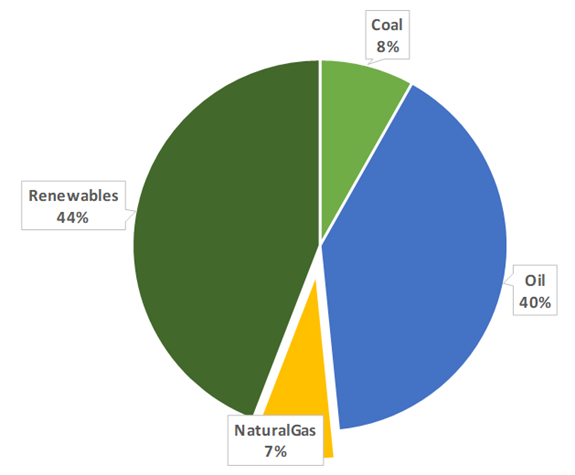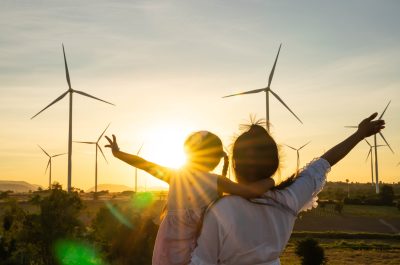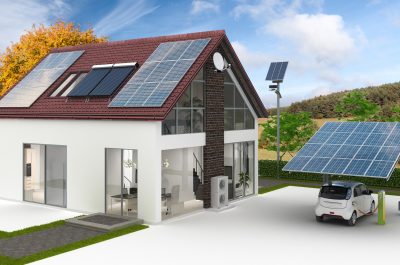Tasmania puts customers first with future gas strategy
Recent headlines show that natural gas continues to be a political football in Australia with concerns about global emissions, gas adequacy and supply, and gas prices all driven by local and international events.
It is refreshing that in this environment that the Tasmanian government has been able to deliver a well-balanced Future Gas draft strategy that respects customer choice and supports opportunities to develop renewable gas.
Gas in the apple isle
Tasmania has very ambitious emission reduction targets, aiming to reach net zero (or lower) by 2030 and to achieve 200 per cent renewable energy by 2040. This is possible largely because of Tasmania’s high level of hydropower, which is also exported as clean electricity to the Australian mainland.

Figure 1: Share of primary energy consumption in Tasmania by fuel (2020-21, source: Draft Tasmanian Gas Strategy)
Gas only provides seven per cent of energy to Tasmania but it is an important fuel. Three quarters of this gas is used by 16 large industrial customers. These operations are significant employers of Tasmanians and rely on gas as a fuel source for heating and as a feedstock to manufacture plastics or other chemicals. Gas also provides more than 13,000 households and small businesses space heating, hot water and cooking. To complement this, LPG provides a heating option for houses not connected to the gas networks, with more LPG being consumed by households in Tasmania compared with natural gas.
Gas has played an important role as a back-up source for electricity generation in Tasmania, though the strategy notes that:
…the Marinus link may mean that gas will play less of an important role in electricity generation as Tasmania will have greater capacity to import electricity from the mainland. (Source: Draft Tasmanian Gas Strategy, pg 6)
However, the importance of gas in providing energy security cannot be overlooked. Fortunately, it was available during the 2015/16 failure of Basslink, which resulted in the island running solely on local hydro and gas-powered electricity generation[1].
Tas gas strategy offers customer choice
Unlike other jurisdictions, Tasmania’s draft strategy does not rely on introducing mandates or moratoriums. The government recognises the important role of gas and that it is not the government’s role to interfere with customer choice.
At the same time, the government is also supporting energy efficiency and the development of renewable gas options. The strategy recognises that a mix of alternative fuels will need to be pursued to reach its emission targets, including:
- Electrification where possible to make use of Tasmania’s growing renewable electricity supply,
- Biogas to replace natural gas usage[2],
- Hydrogen produced from renewable electricity and blended with natural gas or used in place of natural gas and LPG for a range of uses including heating in homes and businesses,
- Renewable methane manufactured from hydrogen and carbon dioxide to replace natural gas.
A key advantage of both biomethane and renewable methane is that it can use existing infrastructure and end‐user equipment.
Decarbonising Tasmania’s gas supply creates opportunities for Tasmania to leverage its competitive advantages to produce its own renewable gas alternatives. This will increase Tasmania’s energy security and open up new domestic and international markets for renewable gas exports. Using renewable gas locally will also create new green value products such as fertilisers or green steel.
A staged transition
The conversion to renewable gas requires a long-term view. Presently we are in the second phase, where renewable gases are developing and some switching or blending occurring. During this phase:
Government policy is focussed on assisting the development of renewable gases, while examining ways to reduce emissions through improved energy efficiency and exploring options to replace the Government’s own gas consumption with low-emission alternatives. (Strategy pg. 19)

Figure 2: Four phases to transition to natural gas (Source: Draft Tasmanian Gas Strategy, pf 20)
Demonstration of renewable gas projects and early offtake projects help build the business case for financially viable renewable gas projects. This can be seen to happen in phase three and four where renewable gas replaces fossil fuel gas sources.
Government support breaking the chicken and egg cycle
Renewable gas creates major economic opportunities. But the supply side and demand side are not quite aligned.
The draft Tasmanian Gas Strategy provides a balanced approach of continuing to offer customer choices while also incentivising and supporting the development of renewable gas options. This will create a demand for renewable gas that could be met by one of many options.
While other jurisdictional governments and local councils are setting themselves renewable electricity targets, the Tasmanian government is showing leadership by exploring opportunities to replace its own gas use (in its own operations) via renewable gas alternatives
[1] https://www.abc.net.au/news/2016-01-28/hydro-tasmania-rejects-claims-1m-turbine-repair-basslink/7122546
[2] A Tasmania Bioenergy Vision is expected to be launched later in 2022.

